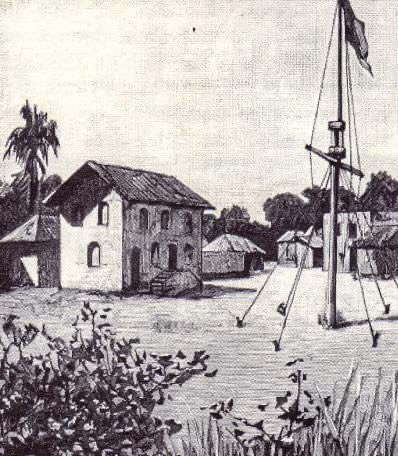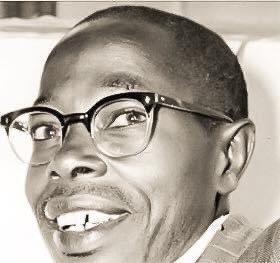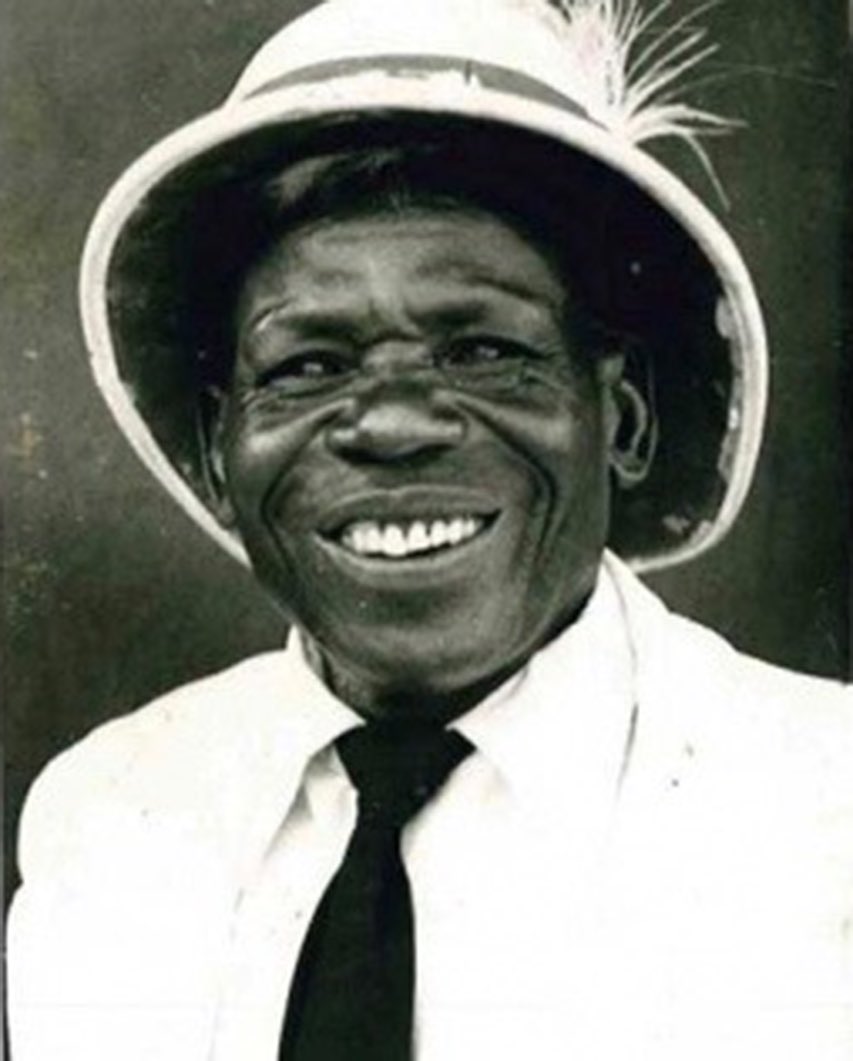#HistoryKeThread: World War 1 Action In Kenya
----
Many people believe that WW1 action in Kenya was primarily focused around Taveta.
----
Many people believe that WW1 action in Kenya was primarily focused around Taveta.

However, there was arguably as much action in other parts of Kenya, including Victoria Nyanza, Kericho and Maasailand.
On Lake Victoria, for instance, the British sank the German armoured tug 'Mwanza'.
On Lake Victoria, for instance, the British sank the German armoured tug 'Mwanza'.
As the war raged in western Kenya, a British telecoms expert, Reginald Rice, was dispatched from the telegraph station at Mombasa up to Lake Victoria to establish a telegraph receiver on SS Clement Hill (pictured), a passenger and cargo steamer on the lake. 

Rice’s brief was to ensure that the British were able to intercept German military communications.
For example, on 14th December 1914, he managed to intercept German Major von Stümer’s despatch to Captain Braunschweig. The intercepted message read thus:
For example, on 14th December 1914, he managed to intercept German Major von Stümer’s despatch to Captain Braunschweig. The intercepted message read thus:
‘Despatch of troops here impossible. Wire situation in that place to Commando, from whom I am demanding reinforcements. Hold the line on the River Mara and Mwanza.’
The interceptions by the British were so invaluable that they had a major effect on how the war turned out.
The interceptions by the British were so invaluable that they had a major effect on how the war turned out.
In one of the intercepts, the British learnt that the German army had left on the lake shore logs of firewood that had been punctured and inserted with dynamite.
The Germans intended the British to find the logs and use them as firewood, thereby blowing them into smithereens.
The Germans intended the British to find the logs and use them as firewood, thereby blowing them into smithereens.
Meanwhile, the British felt stretched and were in desperate need for manpower in Nyanza.
Some local volunteers were rushed from around Nairobi and Kajiado to Kisumu when it was heard that the Germans were on the march in Nyanza.
Some local volunteers were rushed from around Nairobi and Kajiado to Kisumu when it was heard that the Germans were on the march in Nyanza.
The locals were put on the Winifred (pictured here, right, alongside MV Clement Hill) and sailed to Karungu Pier to cut the German march off. The whole idea was for the British to prevent Kisii and Kisumu from falling to the Germans. 

But the port (Karungu) was already occupied by Germans who drove the British away and marched on Kisii on 11th September 1914.
When locals tipped off the resident British settlers of the German approach, the latter hurriedly abandoned their dinner tables and evacuated.
When locals tipped off the resident British settlers of the German approach, the latter hurriedly abandoned their dinner tables and evacuated.
About thirty prisoners were released to help carry money - which included lots of coins, kept in the strong room.
Locals looted the Europeans’ houses in the wake of the evacuation and the Germans subsequently occupied the station.
Locals looted the Europeans’ houses in the wake of the evacuation and the Germans subsequently occupied the station.
To counter the invaders, Lieutenant W. J. T. Shorthose, with forty KAR men and six settlers, bravely marched from Kericho. The aim was to retake Kisii.
Halt ✋🏽: Thread continues below.
Halt ✋🏽: Thread continues below.
Immaculate Honda CRV for sale
2006 Honda CR-V RD7
2400 cc AWD
- Reverse camera
- Bluetooth audio
- Clean interior
- Alloy rims
- Fog lights
💰 KES 860,000 ono.
📞: 0734 238670.



2006 Honda CR-V RD7
2400 cc AWD
- Reverse camera
- Bluetooth audio
- Clean interior
- Alloy rims
- Fog lights
💰 KES 860,000 ono.
📞: 0734 238670.




Hordes of Africans perched on the adjoining hills were treated to live war drama as the two European armies exchanged gunfire around Kisii town. It really did not matter to the locals which of the two European powers took possession of the town.
To them, one white man was no different from the other.
Captain E. G. M. Thorneycroft was killed and Charles Grey, brother of Sir Edward Grey, the then British Foreign Secretary, was wounded.
Tough luck: He not only had his arm amputated but was actually, later on in 1928 killed by a rogue buffalo.
Tough luck: He not only had his arm amputated but was actually, later on in 1928 killed by a rogue buffalo.
Sir Edward must have had a very bitter opinion of East Africa as he had lost yet another brother to a lion in then British East Africa.
But let's get back to the war action.....
But let's get back to the war action.....
...thinking that the British force was much larger than it was, the Germans decided to retreat from Kisii and the British reoccupied the town. The settlers and officials returned to find everything looted, except for a piano belonging to a certain Mrs. Spencer.
The story among the settlers at the time was that when a Kisii chief called Orere sat on the piano, its notes sounded very loudly and the locals took off in a panic, believing that the sound was of the white man's evil spirits.
45 Africans and 15 whites on the German side were killed in the Kisii battle. The toll on the British side consisted of 20 Africans and one white man dead.
The German whites were buried in a common grave, with Father J. A. Wall of the nearby Roman Catholic mission at Nyabururu presiding over the service. Briton Thorneycroft was buried near a tennis court in the town.
By mid-1915, the British were still in need of reinforcements.

By mid-1915, the British were still in need of reinforcements.


So in September of that year, Ewart Grogan (Grogan Road, which is Kirinyaga Road today, was named after him), arranged a public meeting of settlers at the Royal Theatre (Cameo cinema), Nairobi.
He made a fiery speech calling on the British to take up national service for the nascent East African Protectorate.
He took a swipe at the Boers of Uasin Gishu, calling on them to shed their laissez-faire attitude towards the war and take up arms for Britain.
He took a swipe at the Boers of Uasin Gishu, calling on them to shed their laissez-faire attitude towards the war and take up arms for Britain.
A significant number of Afrikaners stepped forward to join the war. In late 1915, conscription was introduced and seven Afrikaners who refused to join the war were put on trial. They were handed varying jail terms of between six and ten months.
In December of 1915, the Germans invaded Tsavo and took the strategic Kasigau mountain. On Christmas Day, they attacked Ndi station on the Mombasa-Uganda railway. 

In the peak of the hot season of January 1916, South African troops under Jan Smuts arrived and engaged the Germans, who were pushed back towards German East Africa (Tanzania) by April.
According to author C.S. Nicholls, one soldier, Noel Smith, wrote the following to his mother:
‘Of course nature and the mosquito are far greater enemies to our advance than the Germans.’
‘Of course nature and the mosquito are far greater enemies to our advance than the Germans.’
It is said that in 1917, there were 1,423 military admissions to hospital for malaria per 1,000 soldiers. Altogether, there were reportedly 40,527 admissions of soldiers for malaria that year, with 2,291 deaths, mostly of Africans from the highland regions.
Jan Smuts reoccupied Taveta in March 1916 and soon captured Moshi and Arusha.
Of course, the war took place in the bush and troops were often hungry. A lot of the supplies were carried by African carrier corps, many of whom died in the war.

Of course, the war took place in the bush and troops were often hungry. A lot of the supplies were carried by African carrier corps, many of whom died in the war.


Nearly all of the food for the fighting forces was sourced from the Tsavo and Athi plains. The British army Supply Depot had troops who scoured the country and shot at game for meat.
War historians report that no less than 40,000 head went to furnish the soldiers with meat. Far more game was killed inside the reserve in those war years than had been shot outside it in the preceding ten years.
Kongoni (hartebeeste) and wildebeeste were most popular, and zebras were shunned, especially by the African troops, as they were deemed unpalatable.
The Supply Depot men occasionally shot at giraffes, not for their meat, but because these 17 feet-tall creatures kept breaking telegraph wires with their necks.
Rhinos, a species now endangered, were shot more for being a nuisance to the troops than for meat.

Rhinos, a species now endangered, were shot more for being a nuisance to the troops than for meat.


Meanwhile, Jan Smuts eventually pushed the Germans led by Von Lettow Vorbeck towards Portuguese East Africa (Mozambique).
A war memorial was unveiled at Muthaiga by Governor Edward Northey on 23rd July 1920.
A number of memorials for the African soldiers were also put up, including the famous one on Kenyatta Avenue, Nairobi, today.
A number of memorials for the African soldiers were also put up, including the famous one on Kenyatta Avenue, Nairobi, today.

In the end, Kenya's contribution to the war came at a huge price of both man and wildlife.
But can you imagine how different things would have been had the Germans succeeded in colonizing Kenya?
But can you imagine how different things would have been had the Germans succeeded in colonizing Kenya?
• • •
Missing some Tweet in this thread? You can try to
force a refresh

 Read on Twitter
Read on Twitter












